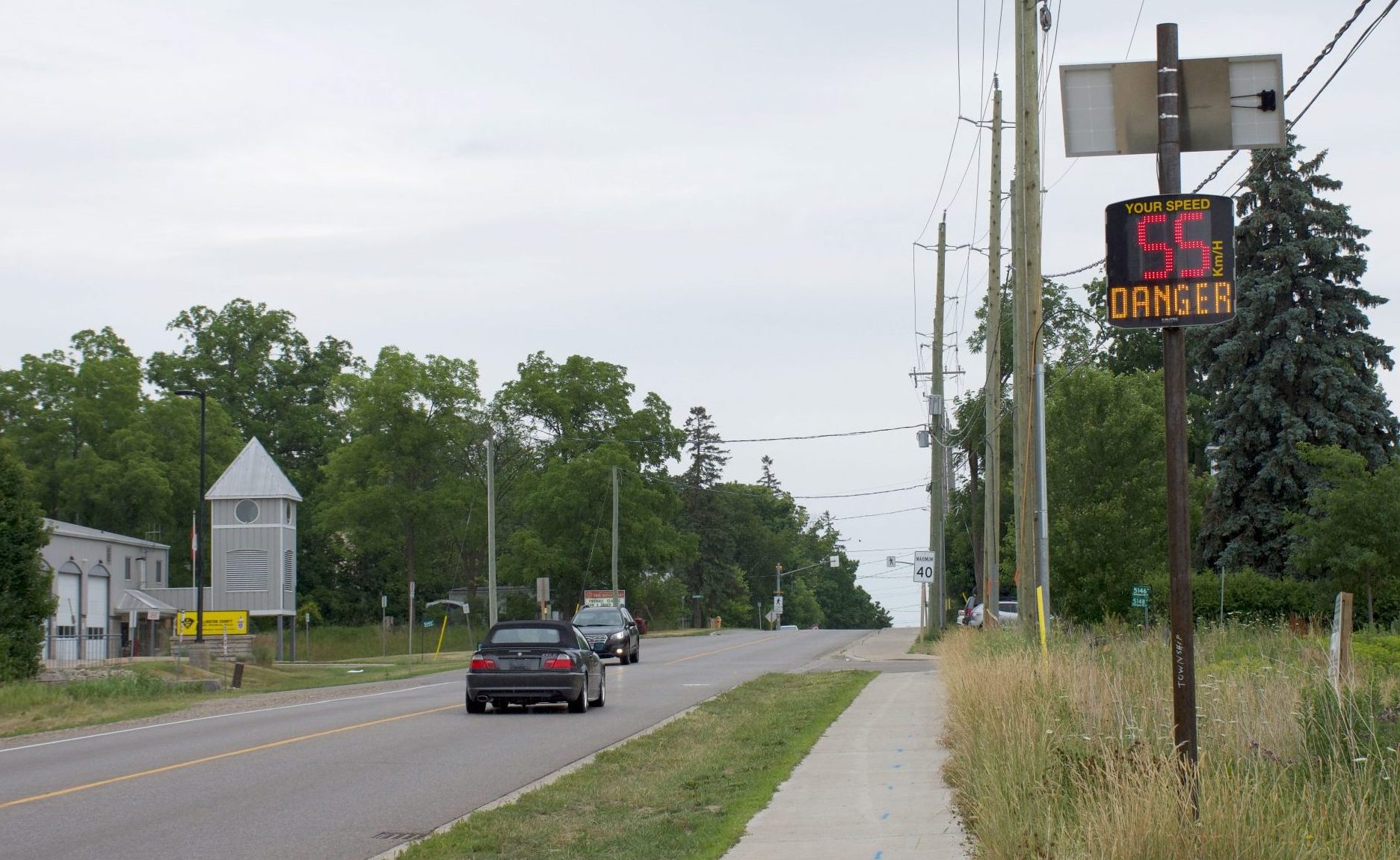GUELPH/ERAMOSA – Council here is directing staff to review research conducted by neighbouring municipalities’ speed limit reduction programs before reconsidering its own speed limits.
On July 11, public works director Harry Niemi presented council with a report regarding a speed limit review, requesting further direction on how to proceed with the township’s speeding concerns.
In his report, Niemi recommended council authorize staff to complete an additional review of existing municipal research on current speed limit reduction programs, to later be taken under consideration for the township.
In November, a traffic calming report presented to council recommended that no specific speed limit reductions be imposed following a speed and traffic analysis that looked at Rockwood and several rural roads.
The “analysis showed that prevailing speeds were in general compliance with posted 50km/h limits in urban areas,” the report noted.
In May, council also turned down a motion to reduce the speed limit from 50 to 40km/h on two residential streets in Rockwood.
Niemi pointed out on July 11 that several municipalities are reducing posted speeds in urban areas based on detailed research, which he said could be useful in terms of applying the information to roads within the township.
“The City of Calgary instituted 40’s throughout, Mississauga is toying with it, Guelph is instituting it, Milton’s looking at some test pilots,” he explained.
“Obviously we’re a small municipality, small department,” he added.
“I don’t have a lot of resources or any time myself to delve into that so I’m looking for council direction to see whether we see what we can pull from other municipalities’ work.”
Mayor Chris White said, “We’ve been wrestling with this for years and what is right and what works and what doesn’t work.”
White pointed to other municipalities that are looking at traffic calming measures, suggesting staff, as Niemi recommended, should review their data and see what they based their decision on, and what research has been done.
“Whether you’re speeding on one of their roads or our roads, it’s roads and speeding,” he explained.
“If there’s research that’s already been done, let’s get that in and then we can take a comprehensive look at what we’re doing for this issue.”
“It doesn’t really matter what you set the speed limit at unless someone’s going to enforce it,” councillor Bruce Dickieson countered.
“There’s going to be people that obey it and there’s going to be some that don’t.”
Councillor Corey Woods said he’d like to see an equality-based approach, stressing if one residential road is 40km/h, they all should be.
“I would support everything being equal,” he said. “If Ash Street should be [40km/h] then maybe Cross Creek should be 40.”
Councillor Steven Liebig suggested addressing with the speed issue first, before dealing with enforcement.
“Even driving the speed limit, which is posted [50km/h], down a residential street is too heavy,” he said.
For municipalities that have already implemented speed reduction programs, Dickieson said he’d be interested to see how effective they are.
“There’s a lot on the table here, it’s not just the speed limits,” White said.
He added a step forward would be having staff look at larger municipalities that have more resources and have done research on speed reductions and reviewing that information.
“You’re never going to get this perfect,” White said.
“There’s grey areas, there’s going to be people that are happy and people that aren’t.
“But let’s not just do something without taking a look at why other jurisdictions are thinking about it, and it might make total sense, let’s just make sure.”
Council directed staff to review research conducted by other municipalities and report back to council.




